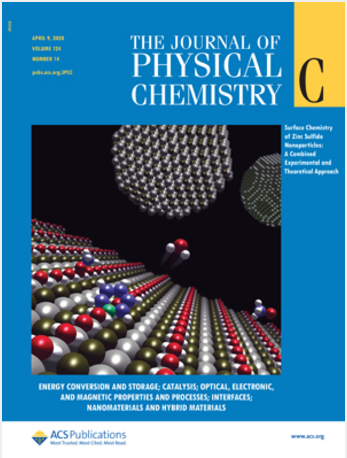硫化铜修饰的Gd2O3纳米棒:一种有前途的磁共振成像和光热治疗探针
IF 3.3
3区 化学
Q2 CHEMISTRY, PHYSICAL
引用次数: 0
摘要
基于双功能纳米平台的治疗技术的发展在癌症治疗研究中引起了相当大的关注。在这项研究中,我们设计Gd2O3@SiO2-CuS纳米棒作为一个集成的诊断治疗系统,同时利用光热转换和顺磁性进行mri辅助光热干预。水热合成的Gd2O3纳米棒表现出优异的t1加权造影剂性能,其纵向弛豫度(r1)为4.2 mM-1·s-1,与商业造影剂相比具有优势。此外,战略性集成的CuS组分具有显著的光热转换效率(19.6%)和持续的治疗稳定性。这些特性为实现磁共振成像辅助光热治疗的应用目标铺平了道路。重要的是,全面的生物安全性评估,包括血液相容性测定和细胞毒性分析,证实了纳米复合材料良好的生物相容性。这些发现强调了Gd2O3@SiO2-CuS纳米棒在图像引导光热治疗应用中的巨大潜力。本文章由计算机程序翻译,如有差异,请以英文原文为准。

Copper Sulfide-Decorated Gd2O3 Nanorods: A Promising Probe for Magnetic Resonance Imaging and Photothermal Therapy
The development of bifunctional nanoplatform-based theranostics has garnered considerable attention in cancer therapy research. In this study, we engineer Gd2O3@SiO2-CuS nanorods as an integrated diagnostic-therapeutic system, simultaneously harnessing photothermal conversion and paramagnetic properties for MRI-assisted photothermal intervention. Hydrothermally synthesized Gd2O3 nanorods demonstrate superior T1-weighted contrast performance, achieving a longitudinal relaxivity (r1) of 4.2 mM–1·s–1, which compares favorably with that of commercial contrast agents. Furthermore, the strategically integrated CuS component exhibits remarkable photothermal conversion efficiency (19.6%) and sustained therapeutic stability. These attributes pave the way for achieving the application objective of magnetic resonance imaging-assisted photothermal therapy. Critically, comprehensive biosafety evaluations, including hemocompatibility assays and cytotoxicity profiling, confirm the nanocomposite’s favorable biocompatibility. The findings underscore the substantial potential of Gd2O3@SiO2-CuS nanorods for image-guided photothermal therapy applications.
求助全文
通过发布文献求助,成功后即可免费获取论文全文。
去求助
来源期刊

The Journal of Physical Chemistry C
化学-材料科学:综合
CiteScore
6.50
自引率
8.10%
发文量
2047
审稿时长
1.8 months
期刊介绍:
The Journal of Physical Chemistry A/B/C is devoted to reporting new and original experimental and theoretical basic research of interest to physical chemists, biophysical chemists, and chemical physicists.
 求助内容:
求助内容: 应助结果提醒方式:
应助结果提醒方式:


